Caledonian Canal
Introduction
The Caledonian Canal follows the Great Glen connecting Loch Linnhe, near Fort William on the west coast, to the Beauly Firth near Inverness on the east coast, via Loch Lochy, Loch Oich and Loch Ness.
Dates
| / /1804 | Caledonian Canal Construction begins. Several quarry to worksite tramways carried stone and other materials to the construction sites. Engineer Thomas Telford. |
| / /1822 | Caledonian Canal Canal opened from Corpach (Loch Linnhe on the West Coast) to Clachnaharry (Beauly Firth, East Coast). |
| / /1843 | Caledonian Canal Canal closed for repairs and an increase in the overall working depth. |
| / /1847 | Caledonian Canal Canal re-opens. |
| /11/1882 | Glasgow and North Western Railway Glasgow and North Western Railway proposed, the Bill presented to Parliament to seek approval. The route was to have been a 167 mile long railway from Glasgow to Inverness via Fort William. Supported by the North British Railway and opposed by the Highland Railway, Caledonian Railway (part owners of the Callander and Oban Railway), Caledonian Canal, David MacBrayne and some landowners. The Bill was rejected in 1883. It was not built (a less ambitious variation of it, the West Highland Railway with an Act in 1889, did open). |
| 01/04/1901 | Mallaig Extension (West Highland Railway) Line opened from Banavie (Banavie Junction [2nd]), over the Caledonian Canal and on through Banavie, Corpach, Locheilside, Glenfinnan, Lochailort, Beasdale, Arisaig and Morar to Mallaig, extending the West Highland Railway to the western seaboard. There was no official opening ceremony. |
| 22/07/1903 | Invergarry and Fort Augustus Railway
Highland Railway Line opened by Eliza Stewart Ellice of Invergarry House. The service was operated by the Highland Railway who were keen to keep the North British Railway away from Inverness. Connecting David Hutcheson and Co steamers operating along the Caledonian Canal connecting the line to Inverness via Loch Ness and the canal. Stations opened at Gairlochy, Invergarry, Aberchalder, Fort Augustus and Fort Augustus Pier. The Lovat Arms and Station Hotel was rebuilt and reopened in connection with new line. |
| / /1909 | Inverness and Ross-shire Railway Clachnaharry Swing Bridge replaced over the Caledonian Canal. |
Locations along the line
These locations are along the line.
This is the canal basin at the south west end of the Caledonian Canal where the canal enters the north end of Loch Linnhe where it joins Loch Eil, which continues west.
...
This single track railway swing bridge is immediately north of Banavie station. It carries the Fort William to Mallaig line at the foot of Neptune's Staircase, a series of interconnected locks on the Caledonian Canal.
...
See also
Mallaig Extension (West Highland Railway)
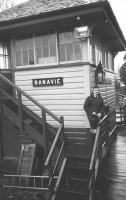
...
Bill Roberton //1973
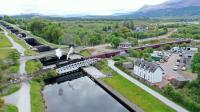
John Gray 27/05/2021
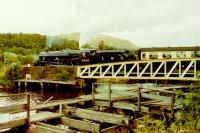
Gordon Steel 16/08/1987
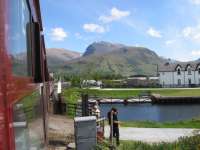
David Spaven 03/06/2016
This is a flight of locks on the Caledonian Canal where the canal gains height, going north east, to run by the River Lochy to Loch Lochy.
...
This was a single track hand operated swing bridge immediately north of Fort Augustus station and its through platform on the west side of the station. The bridge pivoted at the south end.
...
See also
Invergarry and Fort Augustus Railway
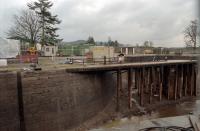
Ewan Crawford //1996

Ewan Crawford //
This was the south end of a short branch from Canal Junction [Inverness]. To the north the single line split into a siding serving the quayside and a line continuing to serve the Glen-Albyn Distillery and southern portion of the quayside. Both quaysides were on the east side of the canal, just north of the Muirtown swing bridge (a road bridge). The distillery was to the east.
...
See also
Muirtown Basin Branch (Highland Railway)
This 126 ft girder railway swing bridge crosses the Caledonian Canal near Inverness where the canal passes between Muirtown Basin (to the south) and Clachnaharry Sea Lock. The railway crossing over has the former Clachnaharry station to the west and former Canal Junction [Inverness] to the east.
...
See also
Inverness and Ross-shire Railway
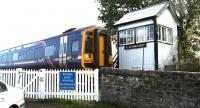
John Furnevel 03/10/2009
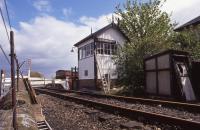
Bill Roberton //1990
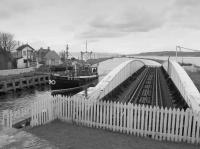
Bill Roberton 28/03/1988

...
Malcolm Chattwood 22/05/2009
...
More details



